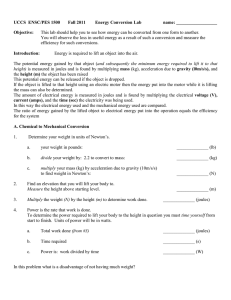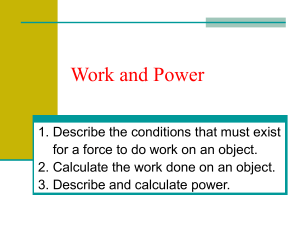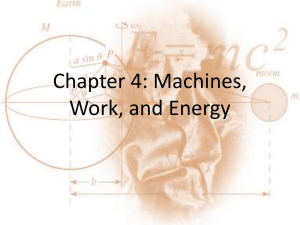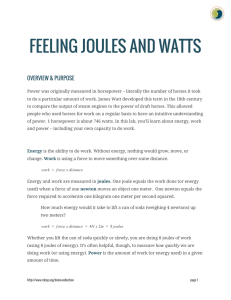Force, energy, and power
advertisement
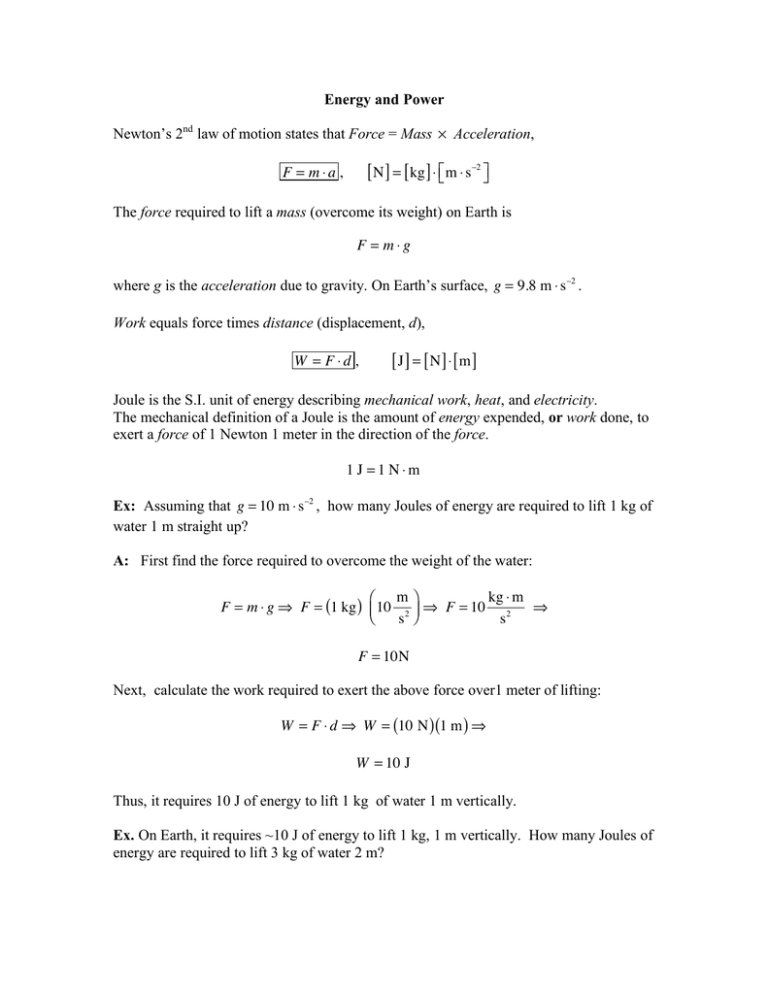
Energy and Power Newton’s 2nd law of motion states that Force = Mass ! Acceleration, [ N ] = [ kg ] ! "# m ! s –2 $% F = m!a , The force required to lift a mass (overcome its weight) on Earth is F = m!g where g is the acceleration due to gravity. On Earth’s surface, g = 9.8 m ! s –2 . Work equals force times distance (displacement, d), W = F !d , [ J] = [N] ! [m] Joule is the S.I. unit of energy describing mechanical work, heat, and electricity. The mechanical definition of a Joule is the amount of energy expended, or work done, to exert a force of 1 Newton 1 meter in the direction of the force. 1 J =1 N!m Ex: Assuming that g = 10 m ! s –2 , how many Joules of energy are required to lift 1 kg of water 1 m straight up? A: First find the force required to overcome the weight of the water: kg ! m # m& F = m ! g " F = (1 kg ) % 10 2 ( " F = 10 2 " $ s ' s F = 10N Next, calculate the work required to exert the above force over1 meter of lifting: W = F ! d " W = (10 N ) (1 m ) " W = 10 J Thus, it requires 10 J of energy to lift 1 kg of water 1 m vertically. Ex. On Earth, it requires ~10 J of energy to lift 1 kg, 1 m vertically. How many Joules of energy are required to lift 3 kg of water 2 m? A: Let w be the number of Joules required to do the work. We can use the above definition of work: W = m!g!d " 10 m % w = ( 3 kg ) ! $ 2 ' ! ( 2 m ) # s & " 60 kg ! m 2 % w =$ '& s2 # w = 60 J OR " 10 J % w =$ ! ( 3 kg ) ( 2 m ) # 1 kg !1 m '& " % 10 J w =$ ' ! 3 kg # 1 kg !1 m & ( ) (2 m ) w = 60 J Power [W] is the rate at which work is done, i.e. the amount of work done / energy expended per unit time. Power = work , time J [ W] = [ ] [s] thus, 1 Watt = 1 Joule per second. Lifting 1 kg per second converts 10 J of energy to 10 W of power. Ex. On Earth, it requires ~10 J of energy to lift 1 kg 1 m. How many Watts of power are required to lift a 3 kg weight 2 meters per second? A: Let p be the power (number of Watts) required. Using the value for work calculated above: p= work 60 J ! p= ! p = 60 W time 1 sec





